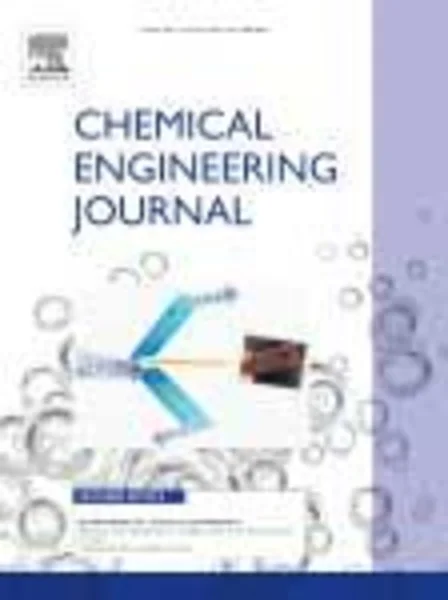-
preparation and characterization of polyimide–silica composite membranes and their derived carbon–silica composite membranes for gas separation
جزئیات بیشتر مقاله- تاریخ ارائه: 1392/01/01
- تاریخ انتشار در تی پی بین: 1392/01/01
- تعداد بازدید: 554
- تعداد پرسش و پاسخ ها: 0
- شماره تماس دبیرخانه رویداد: -
polyimide (pi)–silica composite membranes and their derived carbon–silica composite membranes were prepared for gas separation. the polyimide–silica composite membranes were prepared using the sol–gel technique, in which the polyimide matrix was synthesized by the condensation of pyromellitic dianhydride (pmda) and 4,4′-oxydianiline (oda) while the inorganic phase was prepared by the in situ hydrolysis of tetraethyl orthosilica (teos) and a silane coupling agent, (3-aminopropyl)triehtoxysilane (aptes). the derived carbon–silica composite membranes were prepared by the pyrolysis of the polyimide–silica composite membranes at 900 °c under vacuum. the structures of the membranes were characterized by scanning electron microscopy (sem), energy dispersive x-ray (edx) spectroscopy, and x-ray diffraction (xrd) technique. the gas (he, co2, n2 and o2) permeabilities of the polyimide–silica composite membranes and carbon–silica composite membranes were investigated. with the introduction of the silica, there was no significant enhancement of the gas separation in the resulting polyimide–silica composite membranes over the polyimide membrane, which still suffered a “trade-off” relationship between permeability and selectivity. however, the derived carbon–silica composite membranes exhibited better gas separation properties. the c–sio2 28% composite membrane produced the highest permeances of 1042.18, 991.21, 296.03 and 155.26 gpu for he, co2, o2 and n2, respectively, which were 21.61, 137.67, 103.15 and 150.74 times, respectively, of those of the pure carbon membrane. the c–sio2 11% composite membrane produced the highest selectivities of 37.57, 36.61 and 7.09 for he/n2, co2/n2 and o2/n2, respectively, which had surpassed the robeson’s upper bound for these gas pairs. the agreement between the pure gas selectivity and the mixed gas selectivity for o2/n2 gas pair was reasonable, ranging from −8.30% to +16.61% using the pure gas selectivity as the base except for c–sio2 23% composite membrane which showed +35.81% difference.
مقالات جدیدترین رویدادها
-
استفاده از تحلیل اهمیت-عملکرد در ارائه الگوی مدیریت خلاقیت سازمانی و ارائه راهکار جهت بهبود
-
بررسی تاثیر ارزش وجوه نقد مازاد بر ساختار سرمایه شرکت های پذیرفته شده در بورس اوراق بهادار تهران
-
بررسی تأثیر سطح افشای ریسک بر قرارداد بدهی شرکت های پذیرفته شده در بورس اوراق بهادار تهران
-
بررسی تأثیر رتبه بندی اعتباری مبتنی بر مدل امتیاز بازار نوظهور بر نقد شوندگی سهام با تأکید بر خصوصی سازی شرکت ها
-
تأثیر آمیخته بازاریابی پوشاک ایرانی بر تصویر ذهنی مشتری پوشاک ایرانی (هاکوپیان)
-
بایومس چوب به عنوان منبعی تجدیدپذیر برای تولید اتانول و سایر سوخت های زیستی
-
بررسی پتروگرافی و ژئوشیمی سنگهای آلکالن پتاسیک نیمه جنوبی جزیره اسلامی
-
کاربرد شبکه عصبی مصنوعی در تخمین خواص پتروفیزیکی یکی از مخازن هیدروکربوری جنوب ایران
-
نقص توسعه پایدار در مدیریت صحیح گردشگری دینی در جامعه ایران
-
تأثیر معدنکاری معدن زغال سنگ پروده طبس بر آلودگی منابع آبی منطقه با نگرشی بر ژئوشیمیایی لایه های زغال
مقالات جدیدترین ژورنال ها
-
مدیریت و بررسی افسردگی دانش آموزان دختر مقطع متوسطه دوم در دروان کرونا در شهرستان دزفول
-
مدیریت و بررسی خرد سیاسی در اندیشه ی فردوسی در ادب ایران
-
واکاوی و مدیریت توصیفی قلمدان(جاکلیدی)ضریح در موزه آستان قدس رضوی
-
بررسی تاثیر خلاقیت، دانش و انگیزه کارکنان بر پیشنهادات نوآورانه کارکنان ( مورد مطالعه: هتل های 3 و 4 ستاره استان کرمان)
-
بررسی تاثیر کیفیت سیستم های اطلاعاتی بر تصمیم گیری موفق در شرکتهای تولیدی استان اصفهان (مورد مطالعه: مدیران شرکتهای تولیدی استان اصفهان)
-
ارزیابی تأثیر استراتژی های منابع انسانی در ایجاد و توسعه مدیریت منابع انسانی سبز
-
خوانشی تطبیقی از معماری و هنر مجسمه سازی؛ مورد پژوهی: آثار سانتیاگو کالاتراوا، معمار پیکره ساز اسپانیایی
-
نقش استراتژی های سرمایه انسانی بر بهبود رضایت شغلی (مورد مطالعه: بانک ملت شعب تهران)
-
تعیین نقش شوخ طبعی و سازگاری اجتماعی در پیش بینی فرسودگی شغلی کارکنان دانشگاه پیام نور
-
evaluation of cable force changes effects on cable stayed bridge




سوال خود را در مورد این مقاله مطرح نمایید :